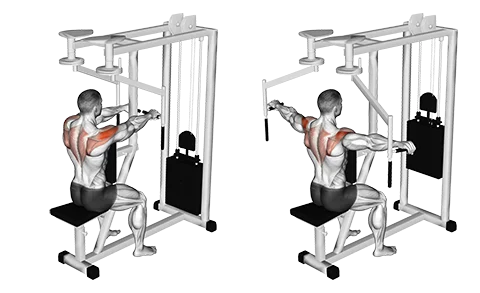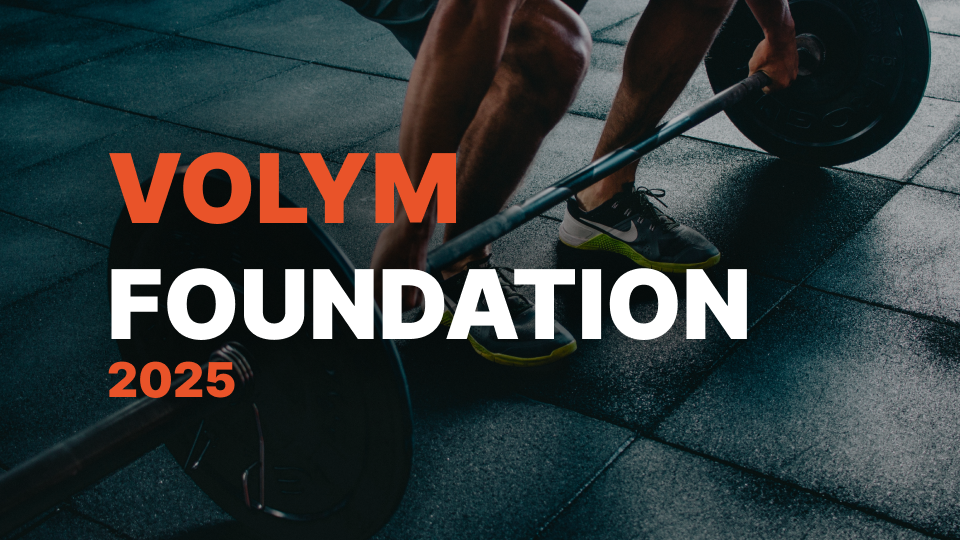title: "Seated Reverse Fly - Strengthen Your Upper Back and Shoulders" seo: title: "Seated Reverse Fly - Build Shoulder and Back Strength with Volym" description: "Learn how to perform the seated reverse fly correctly, track workouts with Volym, and strengthen your shoulders and upper back." createdAt: 2025-06-23 updatedAt: null
Introduction
The seated reverse fly is an effective isolation exercise targeting your upper back and rear shoulders. It strengthens postural muscles, improves shoulder stability, and counteracts poor posture from prolonged sitting.
Image idea: Person performing seated reverse fly on a bench with dumbbells, back slightly leaned forward.
Muscles Worked
- Primary: Rear deltoids, Rhomboids, Middle trapezius
- Secondary: Lower trapezius, Rotator cuff
Image idea: Anatomy illustration highlighting rear deltoids and upper back muscles.
How to Do It (Step-by-Step)
- Sit on the edge of a bench with feet firmly planted.
- Lean forward slightly, keeping a flat back and neutral spine.
- Hold dumbbells beneath your legs, arms extended, palms facing inward.
- Raise the dumbbells outward, keeping elbows slightly bent, squeezing shoulder blades together.
- Slowly lower the dumbbells back to the starting position.
Image idea: Side view demonstrating the correct form and elbow positioning.
Tip: Keep movements slow and controlled to maximize muscle engagement.
Rep & Rest Guidelines
- Strength: 6–8 reps, 2–3 min rest
- Hypertrophy: 8–12 reps, 60–90 sec rest
- Endurance: 15–20 reps, 30–60 sec rest
Use Volym’s Auto Progression and Rest Timer to simplify tracking progress and rest intervals【23†source】【31†source】.
Form Tips
- Maintain a neutral spine and flat back.
- Avoid using momentum; focus on controlled lifts.
- Keep elbows slightly bent throughout.
- Squeeze shoulder blades at the top of each rep.
- Lower weights slowly to maintain tension.
When to Use It
- To balance push-dominant routines.
- Improve posture and upper body stability.
- Enhance shoulder health and prevent injuries.
Track improvements using Volym’s Workout History for consistent training progression【38†source】.
title: "Seated Reverse Fly – Frequently Asked Questions" description: "Common questions answered clearly about performing seated reverse fly."
items:
- label: "Can I perform seated reverse fly with resistance bands?" content: "Yes! Resistance bands offer a great alternative to dumbbells, allowing smooth resistance throughout the movement."
- label: "How heavy should the dumbbells be?" content: "Start with lighter weights to master form first. Typically, 2–8 kg per dumbbell is sufficient for most lifters."
- label: "Is seated reverse fly better than standing?" content: "Seated reverse fly reduces lower back stress and isolates the upper back more effectively compared to standing variations."
- label: "What if I feel shoulder pain during this exercise?" content: "Reduce weight, ensure proper form, and consider strengthening your rotator cuff muscles separately to improve shoulder stability."
- label: "How often should I include this exercise in my routine?" content: "Perform it 1–2 times per week as part of your upper-body or back-focused workouts for balanced development."
::


